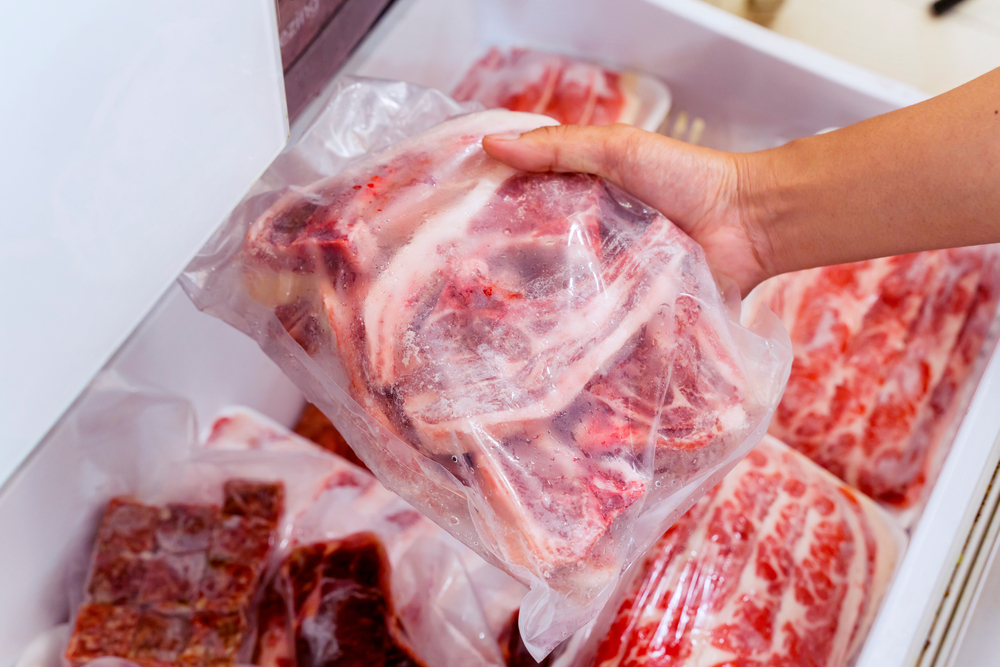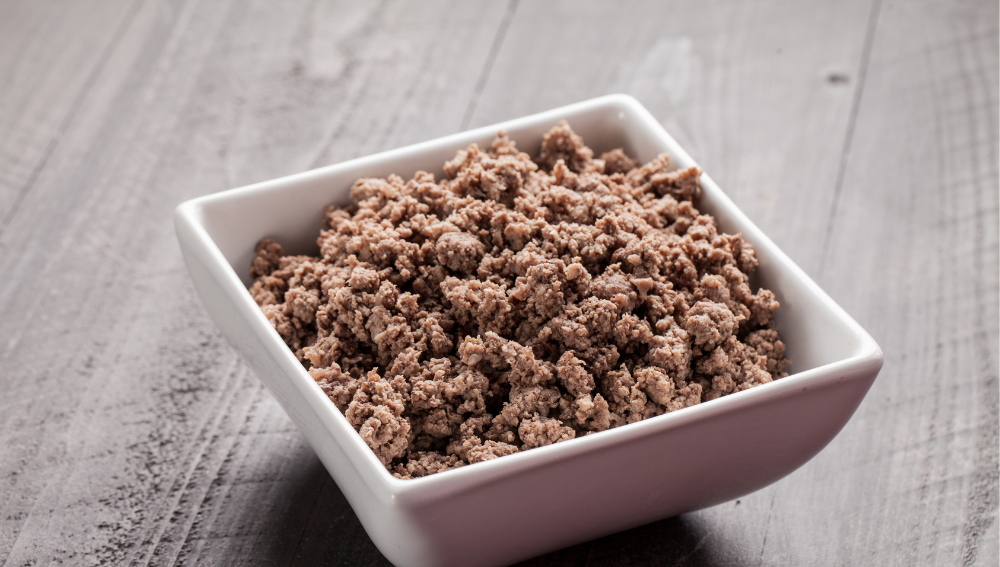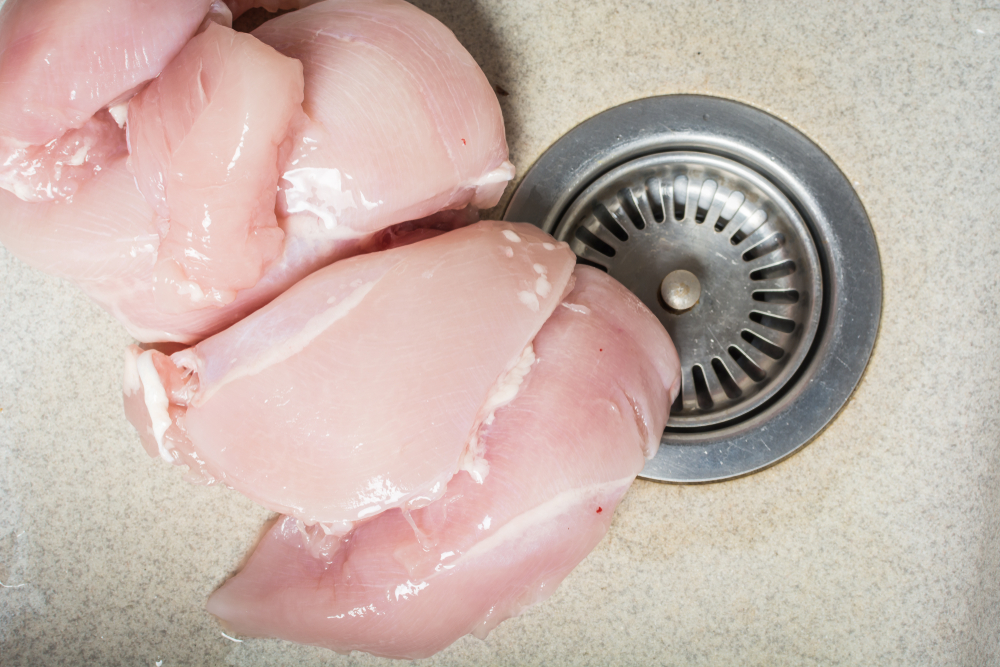When it comes to cooking, there are a lot of rules to follow to ensure that your food is safe to eat. One of the most common questions people have is whether it’s safe to refreeze thawed meat.
The answer isn’t as simple as a yes or no, as there are a few factors to consider.
Understanding the science of freezing and thawing is key to understanding whether it’s safe to refreeze meat. When meat is frozen, the water inside the cells turns to ice, causing the cells to expand and rupture.
When the meat is thawed, the cells release water, which can cause the meat to become dry and lose flavor. Refreezing meat can cause the cells to rupture even further, making the meat even drier and less flavorful.
Additionally, when meat is thawed, bacteria can begin to grow, and refreezing the meat can cause those bacteria to multiply even more rapidly.
Key Takeaways
- Refreezing meat can cause it to become dry and lose flavor.
- Refreezing thawed meat can cause bacteria to multiply rapidly.
- Proper thawing methods and guidelines for refreezing meat should be followed to ensure safety.
Understanding the Science of Freezing and Thawing

The Role of Temperature in Freezing and Thawing
Temperature plays a critical role in the process of freezing and thawing. When meat is frozen, the water in the meat turns into ice crystals, which expand and can cause damage to the meat’s structure.
The rate of freezing is important because the slower the meat is frozen, the larger the ice crystals will be, which can lead to more damage. The ideal temperature for freezing meat is between -18°C and -23°C, as this ensures that the meat freezes quickly and forms small ice crystals.
When meat is thawed, the temperature must be carefully controlled to prevent the growth of harmful bacteria. The best way to thaw meat is in the refrigerator, where the temperature is kept below 5°C. This slow thawing process helps to preserve the meat’s texture and flavor.
Effects on Meat Quality
Freezing and thawing can have a significant impact on the quality of meat. When meat is frozen, the ice crystals that form can damage the meat’s structure, leading to a loss of texture and moisture.
This can result in a tougher, drier piece of meat. Additionally, freezing can cause a loss of flavor and nutrients.
Thawing can also lead to a loss of quality, particularly if the meat is not thawed correctly. If meat is thawed too quickly or at too high a temperature, it can become dry and tough. It is important to thaw meat slowly and at a low temperature to preserve its texture and flavor.
Impact on Nutrients
Freezing and thawing can also affect the nutrient content of meat. When meat is frozen, some nutrients can be lost due to the formation of ice crystals. However, the loss of nutrients is generally minimal and does not significantly affect the overall nutritional value of the meat.
Thawing can also cause a loss of nutrients, particularly if the meat is not thawed correctly. If meat is thawed too quickly or at too high a temperature, some nutrients can be lost. However, the loss of nutrients is generally minimal and does not significantly affect the overall nutritional value of the meat.
The Risks of Refreezing Thawed Meat

Safety Concerns
Refreezing thawed meat can pose safety risks if not done properly. When meat is thawed, bacteria can grow on it if it is not kept at a safe temperature.
If the meat is refrozen without being cooked first, these bacteria can continue to grow and potentially cause foodborne illness.
To ensure safety, it is important to thaw meat in the refrigerator or in cold water, and to cook it before refreezing. If the meat has been thawed at room temperature or in the microwave, it should not be refrozen.
Changes in Flavor and Texture
Refreezing meat can also affect its flavor and texture. When meat is frozen and thawed, the ice crystals that form can damage the cell walls and cause moisture loss. This can result in a dry, tough, or rubbery texture.
Additionally, the process of freezing and thawing can cause changes in the flavor of the meat. For example, some people may notice a metallic or “freezer burn” taste in refrozen meat.
To minimize these effects, it is best to use refrozen meat in dishes where the texture and flavor will not be as noticeable, such as in stews or casseroles. It is also important to properly wrap and store the meat to prevent freezer burn.
Overall, while it is possible to refreeze thawed meat, it is important to do so safely and with an understanding of the potential changes in flavor and texture.
By following proper food safety guidelines and using refrozen meat in appropriate dishes, it is possible to save money and reduce food waste without sacrificing taste or safety.
Proper Thawing Methods

When it comes to thawing meat, it’s important to do it properly to ensure that it stays safe to eat. There are three main methods for thawing meat: refrigerator thawing, cold water thawing, and microwave thawing.
Each method has its own benefits and drawbacks, so it’s important to choose the right one for the situation.
Refrigerator Thawing
Refrigerator thawing is the safest and easiest method for thawing meat. Simply take the frozen meat out of the freezer and place it in the refrigerator.
It will take several hours to thaw, depending on the size and thickness of the meat. It’s important to place the meat on a plate or in a container to catch any juices that may leak out.
Refrigerator thawing is the best method for thawing large cuts of meat, such as roasts or whole chickens. It’s also the best method for thawing meat that will be cooked in the oven or on the grill. However, it does take the longest amount of time, so it’s important to plan ahead.
Cold Water Thawing
Cold water thawing is a faster method for thawing meat, but it requires more attention than refrigerator thawing. To thaw meat using this method, place the frozen meat in a leak-proof plastic bag and submerge it in cold water. Change the water every 30 minutes to keep it cold.
Cold water thawing is best for smaller cuts of meat, such as steaks or chicken breasts. It’s also a good method for thawing meat that will be cooked on the stove or in a pan. However, it’s important to use cold water and change it frequently to prevent bacteria from growing.
Microwave Thawing
Microwave thawing is the fastest method for thawing meat, but it can also be the riskiest. To thaw meat using this method, place the frozen meat in a microwave-safe dish and use the defrost setting on the microwave. Be sure to follow the manufacturer’s instructions for defrosting meat in the microwave.
Microwave thawing is best for small cuts of meat that will be cooked immediately, such as ground beef or chicken pieces. However, it’s important to use caution when using this method, as the meat can easily become partially cooked or overcooked in the microwave.
Overall, it’s important to choose the right thawing method for the situation. Refrigerator thawing is the safest and easiest method, but it takes the longest amount of time. Cold water thawing is faster, but requires more attention. Microwave thawing is the fastest, but can be risky if not done properly.
Guidelines for Refreezing Meat

When to Refreeze Meat
When it comes to refreezing meat, timing is crucial. The USDA recommends that if meat has been left at room temperature for more than 2 hours, it should be discarded and not refrozen. This is because bacteria can grow rapidly at room temperature, and refreezing the meat will not kill the bacteria.
If the meat has been thawed in the refrigerator and has not been left at room temperature for more than 2 hours, it can be safely refrozen. However, it is important to note that there may be a loss of quality due to the moisture lost through thawing.
How to Refreeze Meat Safely
To refreeze meat safely, it is important to follow these guidelines:
- Make sure the meat has been thawed in the refrigerator and has not been left at room temperature for more than 2 hours.
- Check the meat for any signs of spoilage or freezer burn. If there are any signs of spoilage or freezer burn, it should not be refrozen.
- Divide the meat into smaller portions before refreezing. This will allow for faster and more even freezing.
- Wrap the meat tightly in plastic wrap or aluminum foil to prevent freezer burn.
- Label the meat with the date it was thawed and the date it is being refrozen to keep track of how long it has been in the freezer.
It is important to note that refreezing meat can affect its quality and texture. While it is safe to refreeze meat that has been thawed in the refrigerator and has not been left at room temperature for more than 2 hours, it may not taste as good as fresh meat.
In conclusion, it is important to follow these guidelines when refreezing meat to ensure that it is safe to eat and maintains its quality.
Special Considerations for Different Types of Meat

Poultry
When it comes to refreezing thawed poultry, it is important to exercise caution. Poultry is susceptible to bacterial growth, and refreezing can increase the risk of contamination.
If the poultry has been thawed in the refrigerator, it can be safely refrozen. However, if it has been thawed at room temperature or in the microwave, it should not be refrozen.
It is also important to note that chicken and turkey are more prone to freezer burn than other types of poultry. Freezer burn occurs when the moisture in the meat evaporates, leaving it dry and tough. To prevent freezer burn, it is best to wrap the poultry tightly in plastic wrap or aluminum foil before freezing.
Beef
Beef can be refrozen after it has been thawed, but it is important to consider the quality of the meat. If the beef has been thawed in the refrigerator and has not been left out at room temperature for more than two hours, it is safe to refreeze.
However, if the beef has been thawed at room temperature or in the microwave, it should not be refrozen.
It is also important to note that the texture and flavor of beef can be affected by refreezing. The meat may become tough and dry, and the flavor may be altered. To prevent this, it is best to use the thawed beef as soon as possible after it has been thawed.
Fish
Fish can be refrozen after it has been thawed, but it is important to consider the type of fish. Oily fish, such as salmon and tuna, are more prone to spoilage than other types of fish.
If the fish has been thawed in the refrigerator and has not been left out at room temperature for more than two hours, it is safe to refreeze. However, if the fish has been thawed at room temperature or in the microwave, it should not be refrozen.
It is also important to note that the texture and flavor of fish can be affected by refreezing. The fish may become dry and tough, and the flavor may be altered. To prevent this, it is best to use the thawed fish as soon as possible after it has been thawed.
Handling Leftovers and Cooked Meat

Refreezing Cooked Meat
It is safe to freeze cooked meat or poultry after cooking raw foods that were previously frozen. If previously cooked foods are thawed in the refrigerator, you may refreeze the unused portion.
However, it is important to make sure that the cooked meat has been handled safely before refreezing it.
Storing and Reusing Leftovers
Leftovers should be cooled down before putting them in the freezer. It is recommended to store leftovers in small portions so that they freeze quickly, which helps to preserve their quality. When reheating leftovers, they should be heated to a safe temperature (165°F or 74°C) before being eaten.
It is important to store and reuse leftovers safely to prevent foodborne illnesses. Leftovers should be stored in airtight containers and kept in the refrigerator for no more than 4 days. If leftovers are not going to be eaten within 4 days, they should be frozen.
When reheating leftovers, it is recommended to use a food thermometer to ensure that the food has reached a safe temperature. Leftovers should be heated to an internal temperature of 165°F (74°C) before being eaten.
In summary, it is safe to refreeze cooked meat as long as it has been handled safely. Leftovers should be stored and reheated properly to prevent foodborne illnesses.
Common Mistakes to Avoid
When it comes to refreezing thawed meat, there are some common mistakes that people make. These mistakes can lead to foodborne illnesses and spoilage.
In this section, we will discuss two of the most common mistakes to avoid when refreezing thawed meat.
Thawing on the Kitchen Counter
One of the most common mistakes people make is thawing meat on the kitchen counter. This is a risky practice as it allows bacteria to grow rapidly on the meat.
Bacteria can double in number every 20 minutes at room temperature, so leaving meat out for too long can lead to a dangerous amount of bacteria on the meat.
To avoid this mistake, it is recommended to thaw meat in the refrigerator or using the cold water method. Thawing in the refrigerator may take longer, but it is the safest method as it keeps the meat at a constant temperature below 40°F.
The cold water method involves placing the meat in a leak-proof plastic bag and submerging it in cold water. Change the water every 30 minutes until the meat is thawed.
Refreezing Without Proper Packaging
Another common mistake is refreezing thawed meat without proper packaging. When meat is thawed, it loses some of its moisture and becomes more susceptible to freezer burn.
Freezer burn occurs when the moisture in the meat evaporates and leaves the meat dry and tough.
To avoid freezer burn, it is important to properly package the meat before refreezing it. Use plastic wrap or freezer bags to tightly seal the meat and prevent air from getting in. Label the package with the date and type of meat to keep track of how long it has been in the freezer.
By avoiding these common mistakes, you can ensure that your refrozen meat is safe to eat and has a longer shelf life.
Learn more on similar post: Can You Freeze Liverwurst
Frequently Asked Questions
Is it safe to refreeze meat that has been thawed?
Refreezing thawed meat is generally safe as long as it has been thawed properly and has not been sitting at room temperature for too long. However, the quality of the meat may be affected, and there is a risk of bacterial growth if the meat is not handled properly.
What are the risks of refreezing thawed meat?
The main risk of refreezing thawed meat is bacterial growth. When meat is thawed, bacteria can begin to multiply if the meat is not kept at a safe temperature. If the meat is refrozen and then thawed again, the bacteria can continue to grow, increasing the risk of foodborne illness.
Can you refreeze meat that has been thawed in the fridge?
Yes, you can refreeze meat that has been thawed in the fridge as long as it has not been sitting at room temperature for too long. However, the quality of the meat may be affected, and it is important to make sure the meat has not spoiled before refreezing.
How long can thawed meat be kept in the fridge before refreezing?
Thawed meat can be kept in the fridge for up to 3-5 days before it needs to be cooked or refrozen. It is important to make sure the meat is still fresh and has not spoiled before cooking or refreezing.
What is the best way to thaw meat to prevent the need for refreezing?
The best way to thaw meat is to do it slowly in the fridge. This will help prevent the growth of bacteria and will also help the meat retain its quality.
If you need to thaw meat quickly, you can do so in cold water or in the microwave, but it is important to cook the meat immediately after thawing.
What types of meat can be safely refrozen after thawing?
Most types of meat can be safely refrozen after thawing, including beef, pork, lamb, chicken, turkey, and fish. However, it is important to make sure the meat has not spoiled before refreezing.
Meat that has been previously frozen and thawed multiple times may not be safe to refreeze.







